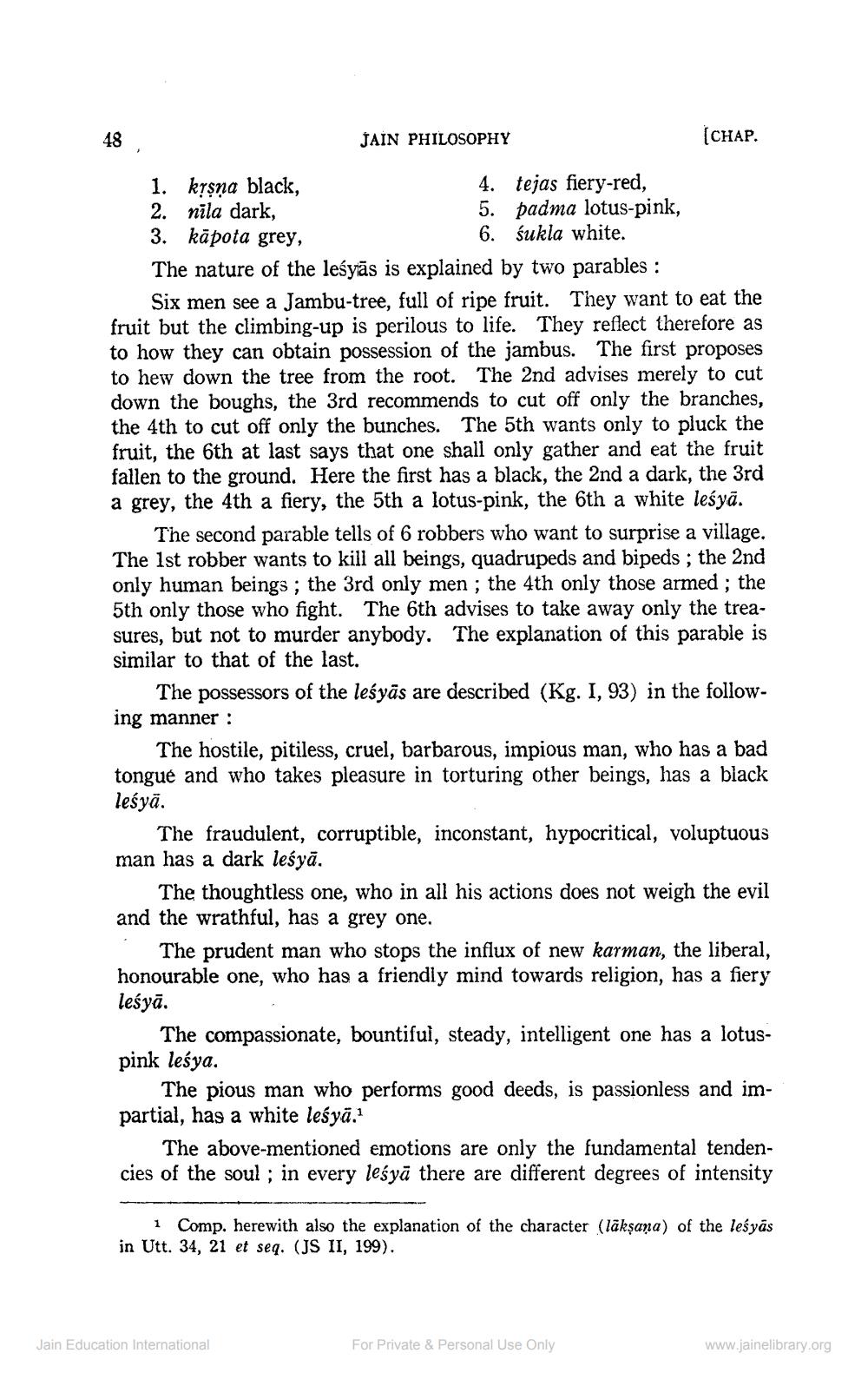________________
48
JAIN PHILOSOPHY
4.
5.
6. śukla white.
tejas fiery-red,
padma lotus-pink,
1. kṛṣṇa black,
2. nila dark,
3. kāpota grey,
The nature of the lesyas is explained by two parables :
Six men see a Jambu-tree, full of ripe fruit. They want to eat the fruit but the climbing-up is perilous to life. They reflect therefore as to how they can obtain possession of the jambus. The first proposes to hew down the tree from the root. The 2nd advises merely to cut down the boughs, the 3rd recommends to cut off only the branches, the 4th to cut off only the bunches. The 5th wants only to pluck the fruit, the 6th at last says that one shall only gather and eat the fruit fallen to the ground. Here the first has a black, the 2nd a dark, the 3rd a grey, the 4th a fiery, the 5th a lotus-pink, the 6th a white leśya.
[CHAP.
The second parable tells of 6 robbers who want to surprise a village. The 1st robber wants to kill all beings, quadrupeds and bipeds; the 2nd only human beings; the 3rd only men; the 4th only those armed; the 5th only those who fight. The 6th advises to take away only the treasures, but not to murder anybody. The explanation of this parable is similar to that of the last.
The possessors of the lesyās are described (Kg. I, 93) in the following manner :
The hostile, pitiless, cruel, barbarous, impious man, who has a bad tongue and who takes pleasure in torturing other beings, has a black leśyä.
The fraudulent, corruptible, inconstant, hypocritical, voluptuous man has a dark leśyā.
The thoughtless one, who in all his actions does not weigh the evil and the wrathful, has a grey one.
The prudent man who stops the influx of new karman, the liberal, honourable one, who has a friendly mind towards religion, has a fiery leśyā.
The compassionate, bountiful, steady, intelligent one has a lotuspink leśya.
Jain Education International
The pious man who performs good deeds, is passionless and impartial, has a white leśyä.1
The above-mentioned emotions are only the fundamental tendencies of the soul; in every leśya there are different degrees of intensity
1 Comp. herewith also the explanation of the character (lākṣaṇa) of the lesyās in Utt. 34, 21 et seq. (JS II, 199).
For Private & Personal Use Only
www.jainelibrary.org




